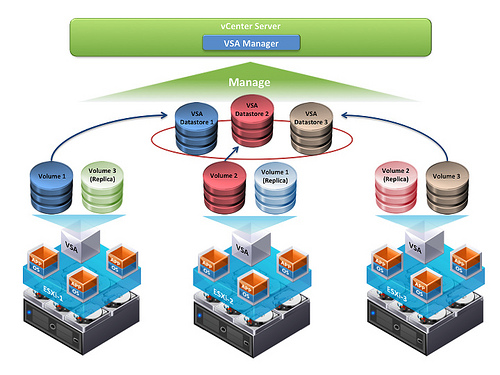Computers Are Like Shoes – BizTech Quick Take
Switch Your Computing Devices Like You Switch Your Shoes
While some are ready to declare the PC extinct, Steve Jin of DoubleCloud thinks that users will simply diversify from the PC as their sole computing device and treat their multiple devices like they do their shoes — meaning they’ll have one for every occasion.
In a post analyzing the future of client computing, Jin makes the case for his analogy:
Let’s take a look back at the history. How many pairs of shoes did a typical person have hundreds of years ago? Probably only one or two for all purposes. There were exceptions like royal families but they were not typical.
How many shoes does a typical person have today? I think at least several. A typical person may have shoes for home, office, beach, sports (could be many like running shoes, tennis shoes, soccer shoes, if you are lucky enough golf shoes), party, and so on. You wear the shoes that match what you do and where you are, and sometimes how you feel, for example wear different colors of same style shoes.
The same thing will happen to every user who will have a PC for serious works, tablet for Web browsing and light games like angry bird, smart phones for text messaging, checking email, and tweets. The conditions and motivations for this diversification are almost here: lower costs, networking, fashionable designs.
There’s no denying that for some users, mobile devices are a fashion statement, much like a pair of shoes. Think of all the bedazzled smartphone cases you’ve seen.
It’ll be interesting to see if the trend toward multiple devices continues, or if users grow fatigued and search for an all-in-one solution.
Read more of Jin’s thoughts on the future of client computing on the DoubleCloud blog.
Business Acumen Is a Must-Have for Today’s CIO
Now more than ever, the days of the “IT guy” working in isolation, away from the day-to-day activities of the business, are over.
In this modern era of infrastructure as a service, storage as a service and software as a service, IT workers are moving to the front lines of their companies and are interacting with clients, both internal and external. And that means the ideal skill set for a good CIO or IT worker has shifted from purely technical expertise to a blend of business and technology acumen.
Chris Peters, a director for Intel, recounts an internal meeting he and some coworkers had at Intel. He realized that the majority of the CIOs involved in the discussion had mixed IT and business backgrounds, a combination he now sees as essential for IT workers today:
As we explored the techniques Intel IT staff use to align our own efforts to the business initiatives, we informally ran down some of the career backgrounds for many of the current CIO staff members and I saw a very similar theme. Many of our IT leaders and senior engineers have worked inside Intel’s business units or had experience in business units at other companies.
The head of IT Customer Capability division worked in sales and marketing, the head of IT’s supply network capability division worked in manufacturing before IT and Diane Bryant (our CIO) came to Intel IT from Intel Architecture Group - one of Intel's core business groups. The list went on and on.
In some cases, their career paths started in IT, moved into a business unit and returned to IT. In other cases, IT hired them directly out of the business units. The common thread was that each person had a diverse skill set that included both technology coupled with an integral knowledge of the business they support.
At Intel IT, we actively create a culture of development and growth for our employees. One of these ways is by actively supporting job rotations, ongoing training and development and hiring for a breadth of diverse skills which includes business experience. Creating an organization with a better understanding of business and our role as IT professionals to drive business value through IT innovation make us a better, healthier and stronger IT organization. This in turn enables better business solutions.
Read more about IT and business acumen in Peters’ post on the Intel Open Port IT Community.
Small IT Shops Have Some Advantages Over the Big Guys
For those of you convinced that building a large IT organization is the best way to stay in charge, you might be surprised to learn that increased size doesn’t necessarily work in your favor. Bigger isn’t always better, warns Chuck Hollis, global marketing CTO for EMC, in a Sept. 19 post on his blog.
The reason? Small IT shops are more agile and nimble. Workers in small IT organizations are accustomed to wearing multiple hats, which is what’s required of an IT services team. Large IT organizations, however, can be bogged down by politics, turf wars and silos, which don’t lend themselves to quick innovation.
Hollis plainly lays out the benefits of a smaller, tighter IT group:
Smaller IT shops (10-100) are quite different. People tend to play multiple roles just to get the work done. There's a lot of collaboration and rotation. Processes and workflows tend to move quickly and fluidly — just to get the job done.
Very little turf and empire building — there's just not enough scale to make that practical.
Most importantly, these smaller IT groups tend to avoid walling themselves off from the rest of the organization. They're engaged and supportive of what their users are trying to get done — they're not locked away in some IT organizational castle surrounded by a bureaucracy moat.
As such, these teams are transitioning to an IT-as-a-service model far faster (and with far less drama) than their larger IT counterparts. They're just getting on with it.
Learn more about the differences between bigger and smaller IT teams in this post on Chuck’s Blog.
Singing the Praises of the vSphere Storage Appliance
VMware’s vSphere offers multiple solutions in one technology. It consolidates and optimizes multiple technologies on multiple ends, allowing for increased efficiencies for all. This includes storage systems, which sometimes suffer from less-than-seamless failover and recovery.
That’s why Duncan Epping of Yellow Bricks thinks that when it comes to resiliency, the vSphere Storage Appliance is top notch. He illustrates his point with a three-node cluster scenario:
Above is a three node cluster. Each node holds 2 volumes. One “active” volume and a Replica volume. Now the Replica volume is where the resiliency comes in to play. If one of the nodes would fail one of the other nodes, depending on which holds the replica, picks up! Yes indeed the VSA volumes are RAID-1 and the failure is literally detected in seconds. Note that this is a synchronous technique, so an acknowledgement is required from both the active and replica of the datastore.
In my example above when ESXi-1 (on the left) would fail then ESXi-2 (middle) would pick up as it is holding the replica. Note that this is a seamless fail-over if the VM is running on a node other than ESXi-1. The amount of time it takes for the fail-over to occur is literally seconds and the replica will be available through the same ip-address. If the VM happened to be running on ESXi-1 then vSphere HA would restart that virtual machine as in any other scenario.
Read more about the vSphere Storage Appliance in Epping’s post on Yellow Bricks.
Lessons Learned from a Server Blockage
Hindsight is 20/20, and while mistakes are inevitable, they’re much more valuable if you can pull a few worthwhile lessons from the experience. IT system failures are most IT workers’ worst nightmares, but on the bright side, if all the data is quickly and easily recovered, it can teach you a thing or two about the strength of your IT setup.
IT instructor and blogger Mitch Garvis learned some important lessons when he woke up to a few paused highly available virtual machines. He quickly accessed the problem and resolved it, but walked away enlightened on three points.
Firstly, never ignore an alert, even if you think you know what it is. Alerts are our systems’ way of telling us that something is getting ready to stop working, and that is never good. If you get an alert that you thought you had accounted for (as I did with my free space alert) then there is a good chance that it is a similar but different warning, and you should take the time to investigate.
Secondly, it is important when architecting your solutions to plan for expansion. I was able to recover from this potential jackpot because when I built the server I planned for expanded storage, so when it happened I did not have to go out and buy extra hard drives — I simply had to extend my VHD. With that being said, I have to remember that I have now used up that expansion space, so over the next few weeks I can plan to purchase a couple of extra drives to regain my breathing space for next time.
Thirdly, I have to thank whoever you thank in cases like these that I had selected the right tools for the job. I hear far too often from IT Pros trying to build patchwork solutions on the cheap that they are planning to cut corners… now as an MVP I am fortunate enough that I get the software for free, but I built my iSCSI software target on high-quality Hewlett Packard ProLiant servers with SAS (serial attached SCSI) drives, instead of building a white-box and putting a bunch of SATA disks into it. Solid hardware and the right drives and RAID level meant that there were no complications or stumbling blocks in this recovery, and I did not need to restore anything from backup (which I could have done but was unnecessary).
For more on Mitch’s experience with his stalled virtual machines, read the full post on The World According to Mitch.
Zoning Is Only Part of the Storage Solution
Clearing up common misconceptions in life is an important but difficult task. But as the saying goes, “Somebody’s gotta do it.”
Anthony Vandewert took to his blog in a bit of exasperation to clear up the confusion about zoning disk and tape traffic separately. The commonly held theory is that disk and tape traffic must be kept in separate zones in a storage area network to avoid any performance issues. But that’s only part of the problem, Vandewert argues.
If you have a single HBA with only one port, then separating disk and tape traffic into separate zones does NOTHING to get around the fact that both streams of traffic (random bursty disk traffic and sequential streaming tape traffic) are all coming from or going to the same HBA port. All zoning achieves in this case is to stop the disk and tape devices from talking to each other (something that in general they are not interested in doing).
Separating disk and tape traffic is best done with separate HBA ports (whether that’s a dual ported HBA or two single port HBAs).
Read more about zoning and disk versus tape traffic in Vandewert’s post on Vandewert’s Aussie Storage Blog.
IT Should Stop Catering to Infrastructure Symptoms
It’s easy to get distracted by the individual aches and pains of any IT infrastructure. But by chasing ailments rather than the cause, IT workers could be running in circles, writes Steve Duplessie.
At the end of the day, all of the infrastructure that IT workers focus on building and optimizing is used to serve one thing: data. And if the cause of any IT woes is data, why not work to solve data problems?
The cause of all of our ills is data. Lots and lots of data. Lots and lots of the EXACT SAME data.
Get rid of the data, get rid of the headache. How? Virtualize it.
In simple terms, virtualization allows one physical thing to appear to be many logical things. This is true whether we’re talking about a server or a data set. The fundamental value proposition of virtualization is that ONE is easier to deal with than MANY. It’s as simple as that.
Virtualization, he argues, is the medicine for the data flu. Is your organization still treating the IT symptoms or is it going straight for the data bug?
Read more about data ailments and treatments in Duplessie’s post on The Bigger Truth blog.
Get In Sync with Windows Intune
The cloud is here, but what has it done for your business lately? Microsoft recently released Windows Intune, the company’s new SaaS cloud management tool that allows IT workers to manage their company’s IT from the cloud.
The offering includes an upgrade to Windows 7 Enterprise Edition, so for organizations that haven’t yet made the switch, there’s a good amount of savings in the deal. Windows Intune also efficiently secures and tracks devices within the company network with a few clicks, which means it can also save valuable time for IT workers.
Russell Smith highlights the features of Windows Intune in this recent article from BizTech.
To learn more about great must-read business IT content, check out our list of 50 Must-Read IT Blogs.







